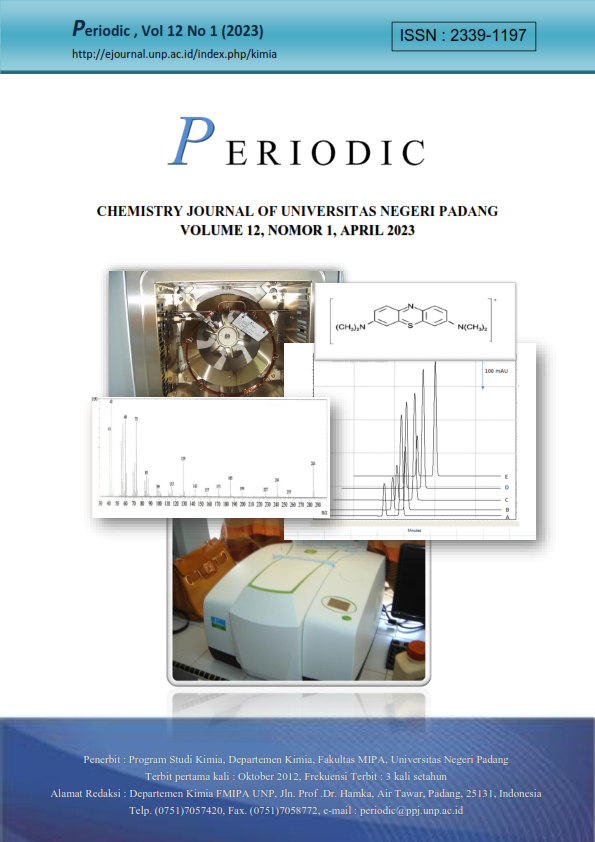Jurnal Periodic (ISSN 2339-1197) terbit berdasarkan surat edaran Direktorat Jenderal Pendidikan Tinggi No. 152/E/T/2012 tentang publikasi karya tulis ilmiah dan terbit sejak Oktober 2012.
Periodic adalah jurnal nasional yang berisi artikel-artikel bidang ilmu kimia, seperti bidang Kimia Analitik, Kimia Fisika, Kimia Anorganik, Kimia Organik dan Biokimia. Jurnal ini mempublikasikan hasil penelitian original, komunikasi singkat, dan artikel review. Sehingga jurnal ini merupakan sarana publikasi dan ajang berbagi karya riset dan pengembangannya di bidang sains kimia.
Pemuatan artikel di jurnal ini dialamatkan ke kantor editor. Informasi lengkap untuk pemuatan artikel dan petunjuk penulisan artikel tersedia di dalam setiap terbitan online. Artikel yang masuk akan melalui proses seleksi mitra bestari dan dewan editor. Artikel yang telah diterbitkan dalam jurnal ini berarti bahwa kegiatan penelitian yang diterbitkan adalah belum, dan tidak akan diterbitkan di tempat lain.
Periodic ini terbit secara berkala dimulai pada tahun 2012 sebanyak dua kali dalam setahun. Pemuatan naskah tidak dipungut biaya.



